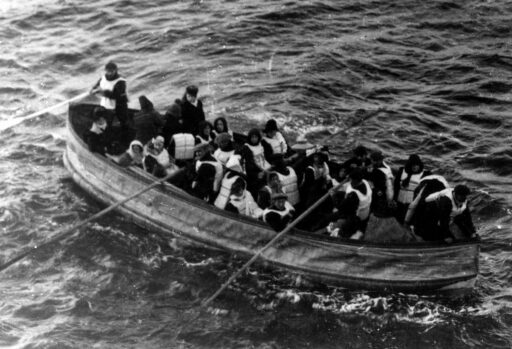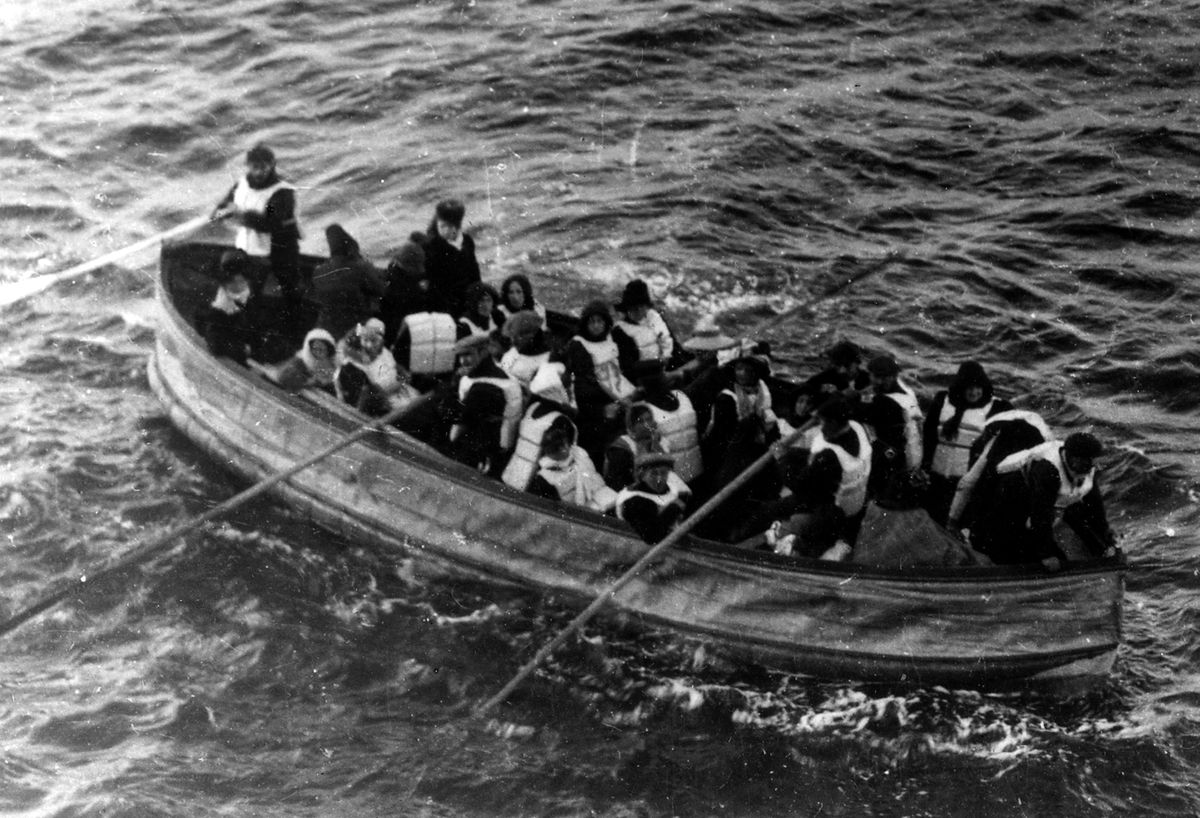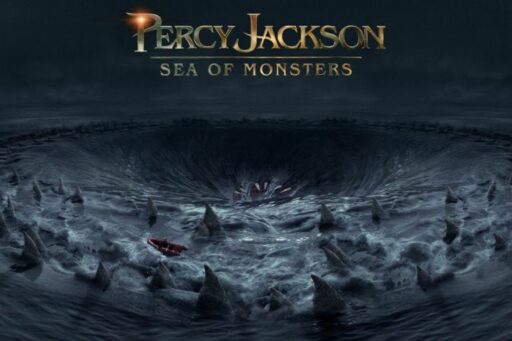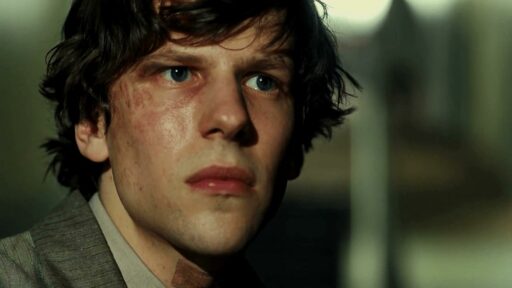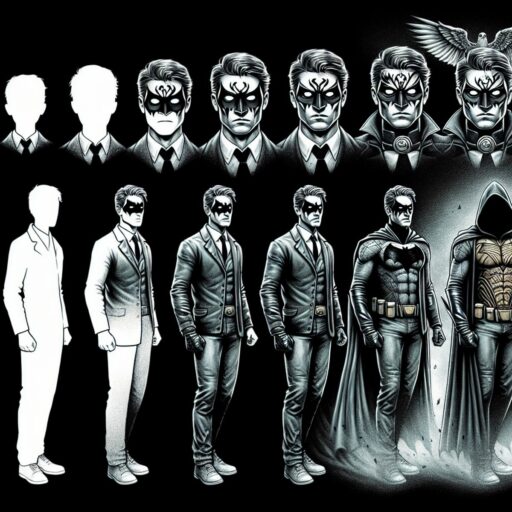James Cameron’s ‘Titanic’ is not just a movie; it’s a cultural phenomenon that continues to captivate audiences more than two decades after its release. This cinematic masterpiece has managed to blend historical storytelling with groundbreaking visual effects, stirring music, and unforgettable performances, creating a film that has left an indelible mark on the hearts of millions around the world. The legacy of ‘Titanic’ is a testament to its ability to evoke a spectrum of emotions, from the thrill of young love to the anguish of tragedy. In this article, we explore the elements that have cemented the film’s place in cinematic history and the ways in which it continues to resonate with viewers of all ages.
Key Takeaways
- James Cameron’s ‘Titanic’ merges historical authenticity with a poignant love story, setting a new standard for epic filmmaking.
- The film’s visual effects were revolutionary at the time, creating a visually stunning and realistic portrayal of the ship’s sinking.
- The chemistry between Leonardo DiCaprio and Kate Winslet, along with the depth of the supporting cast, anchors the film’s emotional impact.
- ‘Titanic’s’ cultural influence extends beyond cinema, affecting fashion, music, and even contributing to historical education.
- Despite its length and the foreknown outcome, ‘Titanic’ remains a powerful emotional experience, with scenes that continue to move audiences to tears.
An Ode to Cinematic Mastery: The Titanic’s Timeless Appeal

The Art of Storytelling Through Film
The Titanic movie is a testament to the power of storytelling through film, captivating audiences with its blend of historical narrative and fictional romance. The film’s plot, while based on the tragic 1912 event, is skillfully woven with personal stories that resonate with viewers on a deeply emotional level.
- The narrative structure: A seamless blend of past and present.
- Character development: Rich and complex arcs that engage the audience.
- Emotional engagement: Scenes crafted to evoke a spectrum of feelings.
The artistry in Titanic’s storytelling lies not just in the grandeur of its scenes, but in the minute details that build a world both epic and intimate.
The film’s ability to transport viewers to another time and place is a hallmark of its storytelling prowess. It’s a curated list of films for all tastes, including romantic classics and cinematic journeys that have become iconic in their own right. Titanic stands among these as a beacon of filmic narrative, demonstrating how a well-told story can become timeless.
Visual Effects: Setting the Benchmark
The Titanic movie not only captivated audiences with its poignant story but also set a new standard for visual effects in cinema. The film’s groundbreaking use of CGI and practical effects created an immersive experience that was unparalleled at the time of its release. The visual effects team meticulously crafted the illusion of the grand ship and its tragic demise, leaving an indelible mark on the industry.
- The recreation of the Titanic was a blend of full-scale sets, miniatures, and digital effects.
- Advanced computer-generated imagery (CGI) brought the ship and its final hours to life with stunning realism.
- Practical effects, including a massive water tank and detailed set pieces, added to the authenticity of the scenes.
The seamless integration of visual effects with live-action performances resulted in a cinematic spectacle that remains influential to this day.
The film’s visual achievements are not just technical triumphs but also narrative tools that enhance the emotional depth of the story. They serve as a testament to the power of visual storytelling in film, proving that with the right effects, filmmakers can transport audiences to another time and place, making the impossible seem real.
Music and Score: An Emotional Voyage
The emotional resonance of Titanic’s music and score cannot be overstated. James Horner’s composition, coupled with Celine Dion’s iconic voice, created a soundtrack that is both haunting and uplifting. The film’s main theme, My Heart Will Go On, became synonymous with the movie’s poignant narrative, etching itself into the hearts of audiences around the world.
The score’s ability to convey the grandeur and tragedy of the Titanic’s voyage is a testament to Horner’s skill as a composer. The music moves seamlessly from the exuberance of life aboard the ship to the somber tones that foreshadow the impending disaster. Each note is crafted to enhance the emotional impact of the film’s most memorable scenes.
- The main theme, My Heart Will Go On, is a powerful love ballad that captures the essence of the film.
- Subtle motifs throughout the score echo the characters’ emotions and the ship’s journey.
- The use of period-appropriate music adds authenticity to the setting, while original compositions underscore key moments.
The soundtrack of Titanic is not just a collection of songs; it is an integral part of the storytelling that amplifies the cinematic experience.
Beyond the Iceberg: Character Arcs and Performances

Leonardo DiCaprio and Kate Winslet: A Chemistry Unmatched
The on-screen romance of Leonardo DiCaprio and Kate Winslet in Titanic is often hailed as one of the most iconic in film history. Their portrayal of Jack and Rose transcended the screen, creating a love story that resonated with audiences worldwide. Their chemistry was palpable, making every scene they shared a memorable one.
- The initial meeting on the grand staircase, a moment of instant connection.
- The playful exchange during the ‘flying’ scene at the ship’s bow.
- The intense emotion during the final goodbye, a testament to their bond.
The depth of their performances added layers to the narrative, turning Titanic into a cinematic experience that was as much about human connection as it was about the historical tragedy.
DiCaprio and Winslet’s dynamic was not just a product of excellent casting but also of meticulous character development and direction. Their relationship evolved on screen, drawing viewers into their world and making the audience root for their survival against all odds.
Supporting Cast: The Unsung Heroes
While the lead performances in Titanic are often lauded, the supporting cast deserves equal recognition for their contributions to the film’s emotional depth. Their performances added layers of complexity and humanity to the story, enriching the narrative tapestry woven by James Cameron. The ensemble cast, each with their own backstory, provided a glimpse into the lives of the passengers and crew aboard the ill-fated ship.
- Kathy Bates as the ‘Unsinkable’ Molly Brown brought a spirited resilience to the screen.
- Victor Garber’s portrayal of shipbuilder Thomas Andrews offered a poignant reflection of regret and responsibility.
- Bernard Hill as Captain Edward Smith provided a dignified presence amidst the chaos.
The supporting characters were instrumental in portraying the societal microcosm aboard the Titanic. Their stories, though less prominent, were no less significant in the grand narrative of love, loss, and human courage.
The unsung heroes of Titanic not only supported the main narrative but also brought to life the diverse tapestry of human experiences that made the film resonate with audiences worldwide.
Character Development: Journeys of Love, Loss, and Redemption
The narrative of Titanic weaves a complex tapestry of human experiences, charting the courses of its characters through love, loss, and the quest for redemption. The Fortune sisters, each at a pivotal moment in their lives, boarded the RMS Titanic, unaware of the tragedy that awaited them. Their stories, though not the grand romances often depicted in cinema, reflect the flawed and poignant nature of real-life journeys.
- Catharine, who defies the expectations of becoming a romantic heroine or a joyful bride, finds her voice and purpose as a writer.
- Another character, having broken the rules for love, engages in a heartrending nursery conversation about grief’s numbing limbo.
The film’s portrayal of these characters underscores that life’s resolutions are often messy and skewed, diverging from the neat conclusions we might anticipate. The sisters’ narratives are a testament to the diversity of human needs and the unpredictable paths to fulfillment.
The Titanic movie, in its exploration of character arcs, presents a raw and unvarnished look at the human condition, challenging viewers to reflect on the complexities of their own lives.
Cultural Impact and Enduring Legacy

Titanic’s Influence on Pop Culture
The Titanic movie, released in 1997, swiftly sailed beyond the realm of cinema to anchor itself deeply in the cultural zeitgeist. Its influence on pop culture is as vast as the ocean itself, permeating various forms of media and entertainment. From the iconic ‘king of the world’ pose to the heart-wrenching ‘I’ll never let go’ line, Titanic’s moments have been referenced, parodied, and celebrated across countless platforms.
- The ‘king of the world’ pose has become a staple in pop culture, often imitated in photographs and social media posts.
- The phrase ‘I’ll never let go’ has transcended the film, becoming a symbol of enduring love and commitment in popular lexicon.
- Titanic-themed parties and events continue to captivate fans, showcasing the film’s lasting appeal.
- The movie’s influence extends to fashion, with the ’90s styles worn by the characters sparking trends and nostalgia.
The film’s ability to resonate with audiences around the globe cements its status as a cultural phenomenon, not just a cinematic one.
The pageantry of Titanic-themed events and the homage paid by other films and television shows are a testament to the movie’s pervasive impact. It has inspired a generation to explore the balance between artistry and popularity in movies, the evolution of film from silent to sensational, and the cultural impact of movies.
The Film’s Role in Historical Education
While ‘Titanic’ is often celebrated for its cinematic achievements, it also plays a significant role in historical education. By bringing the tragic events of 1912 to life, the film serves as a gateway for audiences to explore the past. The attention to detail in set design and period costumes, along with the portrayal of class distinctions aboard the ship, provide a vivid snapshot of the early 20th century.
- The film sparked interest in the history of the RMS Titanic and the era it sailed in.
- It inspired educational materials and documentaries.
- ‘Titanic’ led to increased public awareness about maritime safety and the changes implemented after the disaster.
The movie’s impact extends beyond entertainment; it fosters a deeper understanding of the human stories intertwined with historical events. The portrayal of the Titanic’s passengers and crew invites reflection on the value of life and the hard choices faced in moments of crisis.
The film’s educational legacy is also evident in its use in academic settings. Teachers often use ‘Titanic’ to engage students with history, discussing the broader social and economic context of the time. This approach helps to humanize history, making it more relatable and impactful for learners.
Preserving the Memory: Titanic in the Digital Age
In the digital era, the legacy of the Titanic movie continues to sail through the vast ocean of online content. The film’s presence on various streaming platforms ensures that new generations can discover the epic romance and tragedy of the RMS Titanic. Social media, with its powerful reach, has played a pivotal role in keeping the memory of the Titanic alive. Fans and historians alike share clips, facts, and artwork, contributing to a global community dedicated to the film’s preservation.
The digital age has also seen the emergence of interactive experiences, such as virtual reality tours of the ship and educational games that allow users to explore the Titanic’s history in immersive ways. These digital endeavors not only entertain but also educate, fostering a deeper understanding and appreciation of the historical event.
- Streaming platforms: Accessibility to the film
- Social media: A hub for fan engagement
- Virtual reality: Immersive historical exploration
- Educational games: Learning through interactive play
The digital landscape has transformed how we remember and honor the Titanic, ensuring that its story remains a poignant part of our collective memory.
The Anatomy of a Blockbuster: Dissecting Titanic’s Success

Box Office Records: A Goliath in Cinema
When ‘Titanic’ hit the theaters, it didn’t just make waves; it set a new standard for what a blockbuster could achieve. The film’s financial success was as monumental as the ship itself, breaking box office records with the ease of the iceberg that split the Titanic’s hull.
- Opening weekend: $28.6 million
- Domestic gross: Over $600 million
- Worldwide gross: Approximately $2.2 billion
These figures not only crowned ‘Titanic’ as the king of the box office but also showcased the immense potential for revenue in the film industry. The movie’s performance was a testament to its universal appeal, drawing audiences from all walks of life and across the globe.
The sheer scale of ‘Titanic’s’ box office triumph is a reflection of its deep emotional resonance and cinematic excellence. It remains a benchmark for success, influencing the ambitions and strategies of film productions for years to come.
Cinema in 2021 saw a rise in blockbuster scale and indie success, with genre-bending and social commentary. The industry adapted to pandemic challenges, leading to a box office resurgence.
Critical Acclaim and Award Season Glory
The Titanic movie not only captivated audiences worldwide but also sailed triumphantly through award season, garnering critical acclaim at every port. The film’s sweeping success is a testament to the cast and crew’s dedication, which translated into a treasure trove of accolades.
- Academy Awards: 11 wins including Best Picture and Best Director
- Golden Globe Awards: 4 wins including Best Motion Picture – Drama
- BAFTA Awards: 3 wins including Best Sound
This haul of prestigious awards highlighted the film’s exceptional craftsmanship, from its meticulous direction to its powerful performances. Among the celebrated was Leonardo DiCaprio, whose portrayal of Jack Dawson left an indelible mark on cinema, echoing through his later roles in films like ‘Inception’ and ‘Titanic’.
The resonance of Titanic’s achievements in the realm of film awards is a clear indicator of its quality and the impact it has had on the industry and audiences alike.
Marketing and Merchandising: A Case Study
The marketing and merchandising strategies employed for the Titanic movie were as colossal as the ship itself. Paramount Pictures and 20th Century Fox embarked on a promotional voyage that not only captivated audiences but also created a merchandising frenzy. The film’s memorabilia sailed off shelves, turning the tragedy of the Titanic into a commercial triumph.
- Exclusive partnerships with brands for co-branded products
- Limited edition collectibles that became instant hits
- Innovative use of media and advertising to create buzz
The synergy between the film’s emotional pull and the allure of owning a piece of history proved irresistible.
The table below showcases some of the remarkable figures that highlight the success of Titanic’s marketing and merchandising efforts:
| Year | Merchandise Sales | Advertising Spend |
|---|---|---|
| 1997 | $675 million | $200 million |
| 1998 | $1.2 billion | $250 million |
These numbers reflect a strategic masterpiece in marketing, where every dollar spent on advertising turned the wheels of a much larger revenue machine. The legacy of Titanic’s marketing success continues to be a benchmark for blockbuster films.
Emotional Resonance: The Scenes That Touched Our Hearts

The Sinking: A Spectacle of Tragedy
The depiction of the Titanic’s final moments in the film is nothing short of a cinematic marvel. The sheer scale of the tragedy is conveyed with a visceral intensity that leaves viewers both awestruck and heartbroken. The scene’s execution required a delicate balance of technical prowess and emotional depth, which was achieved through a combination of groundbreaking visual effects and powerful performances.
- The chaos and panic as the ship meets its fate.
- The poignant moments between characters amidst the disaster.
- The technical mastery that brought the sinking to life on screen.
In the midst of the chaos, the film captures the human spirit in its most vulnerable form, highlighting the courage and despair of those on board.
The sinking scene is a testament to the film’s ability to blend spectacle with storytelling. It serves as a stark reminder of the human cost of the tragedy, ensuring that the legacy of the Titanic and its passengers is preserved through the power of film.
Heartfelt Goodbyes: Moments That Made Us Cry
The Titanic movie, with its poignant narrative, has etched itself into the hearts of audiences worldwide. The emotional depth of the film is not solely tethered to the tragic demise of its characters. Instead, it’s the intimate moments of love, sacrifice, and the human spirit that evoke the most tears.
- The Airport Dropoff scene from another film reminds us that the most heart-wrenching goodbyes are often not about death, but about separation and the unspoken words left hanging in the air.
- Similarly, in Titanic, it’s the tender exchanges, the sacrifices made for love, and the shared glances that truly pierce the heart.
The beauty of these scenes lies in their ability to convey profound emotions without relying on dialogue. It’s the silent understanding, the subtle gestures, and the raw emotion that resonate with us long after the credits roll.
The film’s ability to capture the essence of a heartfelt goodbye is what makes these moments unforgettable. They remind us of the fragility of life and the depth of human connection, making us cherish our loved ones even more.
The Legacy Scene: Love Transcending Time
In the final moments of Titanic, the film transcends the boundaries of time, weaving a tapestry of eternal love that has left an indelible mark on the hearts of audiences worldwide. The reunion of Rose and Jack in the grand staircase of the Titanic is not just a scene; it’s a culmination of an epic love story. This poignant moment serves as a testament to the film’s central theme: love’s power to endure beyond life itself.
The legacy scene is a masterful blend of technical prowess and emotional depth. It showcases the film’s ability to connect with viewers on a profound level, leaving a legacy that continues to resonate through the years. The scene’s impact is reflected in the way it has been embraced in various forms of media and its influence on storytelling in cinema.
- The grand staircase reunion
- The emotional weight of the scene
- Its influence on future cinematic love stories
The legacy scene is a reminder that some stories are timeless, and some emotions are universal. It captures the essence of Titanic’s enduring appeal and why it remains a beloved masterpiece.
Conclusion
As the curtain falls on our exploration of the Titanic movie’s enduring legacy, we are left with a tapestry of emotions that have been masterfully woven by its creators. From the harrowing scenes of the ship’s demise to the poignant farewells that tug at our heartstrings, the film has etched itself into cinematic history. It has become more than just a retelling of a tragic event; it is a cultural touchstone that continues to resonate with audiences around the world. The Titanic movie, with its blend of romance, disaster, and human resilience, remains a testament to the power of storytelling and the indelible mark it leaves on the human experience.
Frequently Asked Questions
Why is the Titanic movie considered a cinematic masterpiece?
The Titanic movie is considered a cinematic masterpiece due to its compelling storytelling, groundbreaking visual effects, emotional music score, and powerful performances. The film’s ability to resonate with audiences worldwide and its depiction of a historical event with a human touch contribute to its timeless appeal.
What makes the character arcs in Titanic so impactful?
The character arcs in Titanic are impactful because they portray relatable human experiences such as love, loss, and redemption. The chemistry between Leonardo DiCaprio and Kate Winslet, along with the strong performances from the supporting cast, brings depth to the characters’ journeys.
How did Titanic influence pop culture?
Titanic had a massive influence on pop culture, with iconic quotes, scenes, and characters entering the collective consciousness. It sparked trends in fashion, music, and even contributed to renewed interest in the historical event of the Titanic’s sinking.
What records did Titanic set in the film industry?
Titanic set numerous records in the film industry, including highest-grossing film at the time, a record number of Oscar nominations and wins, and it remained a box office champion for several years. Its success is a testament to its widespread appeal and the audience’s emotional connection to the story.
Which scenes from Titanic are most remembered for their emotional impact?
The scenes depicting the sinking of the Titanic are renowned for their emotional and visual impact. Additionally, the heartfelt goodbyes and the final scene where love transcends time are particularly memorable for their ability to evoke strong emotional responses from the audience.
How has Titanic remained relevant in the digital age?
Titanic has remained relevant in the digital age through various remastered releases, availability on streaming platforms, and continued interest in the film’s themes and characters. The legacy of Titanic endures as it is introduced to new generations and as fans revisit the film for its emotional and historical significance.

